It use to be that trees felled on farm acreage rarely left that farm. They were used for everything from building the outhouses or fences to just being burnt for the cooking or washing. Wood always has been and probably always will be the most efficient, economical material on any small farm; especially if you have a few handy tools and just a little bit of know-how. Here’s the beauty, though: God has built into each of the hundreds of varieties of trees a near endless combination of characteristics, to meet a near endless number of needs. The trick is matching the tree to the need at hand. And with the smaller size of self-sufficient farms or homesteads these days, matchin’ the best tree to the job is well worth considering.

Almost everywhere you look, there’s a tree for practical use on the farm that’s unique in some helpful way. Even undesirable characteristics of a tree can be of benefit. Take, for instance, the sweet gum trees tendency to rot from the inside out. Your imagination is the only thing that limits what can be done with a hollow gum on the farm.
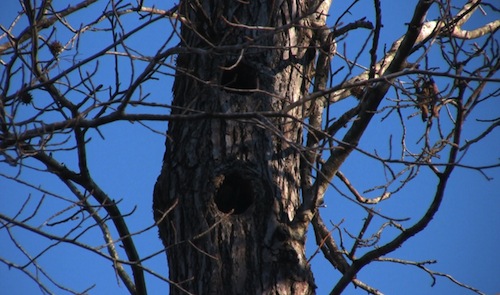

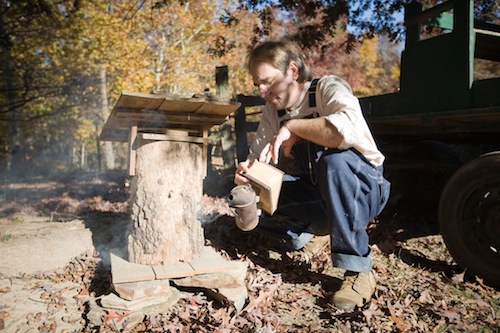
Hollow gums are useful for anything from bee gums to homemade livestock troughs.
The well-dried sap also makes a tasty “gum” that kids have chewed for decades.
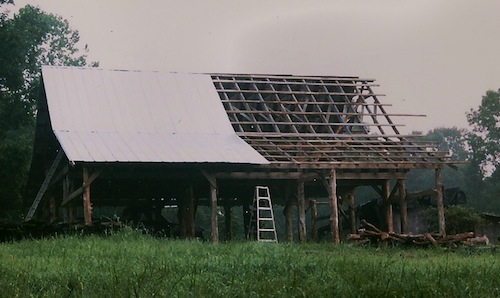
The interwoven grain of sweet gum or elm makes ‘em just about impossible to split. This is why they make good lathe boards (that shingles or tin are nailed to) since they won’t easily let go of a nail, and won’t split if nailed close to its edge.
Black walnut is a beautiful, fine-grained wood that smells almost as good as it looks when worked. (For a deeper look, take a look at Black Walnut in the Trees and Wild Plants section of the website)
Ash is best known for its desirable burning properties burning hotter for a longer period of time than other firewood. It’s also easier worked than other hardwoods, and still has great strength.
The wood from maple is a favorite for smoking or grilling meat, along with apple wood. Except for the yearly pruning of the fruit trees you rarely have access to apple wood…unless tragedy strikes in the orchard.
Dogwood is handy for “gluts” or wedges that can be used for both felling trees and then splitting them into rails. It is a fine-grained wood, but has quite a bit of strength. Don’t let your wife or mother-n-law know you’re cuttin’ ’em down for that, though, ‘cause they like lookin’ at their blooms in the spring of the year.
Poplar is one of the “softest” hardwoods, and easy to carve. Make your wife or mother-n-law a wooden bowl or bread platter out of one, and you might make up for the new dogwood stump.
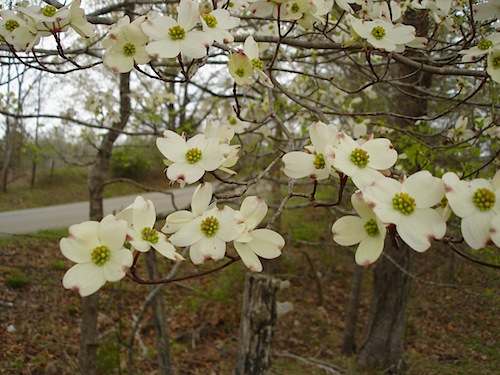
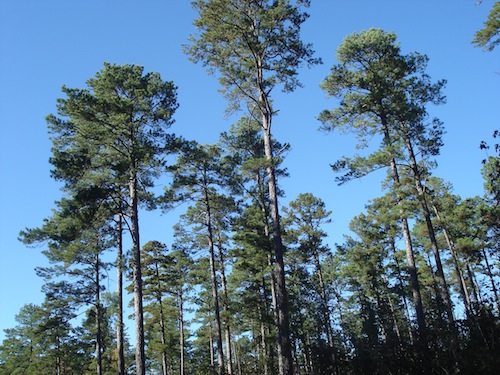
Pine is fast growing, straight and tall but a bad candidate for ground contact use since it’s vulnerable to rot and insect damage. The exception to this is the heartwood of large pines which, when exposed, is called kindling (kin’lin’).
This kin’lin’ from the core of fallen pines is often used to help get fires goin’ because of its semi-flammable rosin, which insects seem to hate. The rosin can be cooked out of kin’lin’ producing a dark substance called pine tar which has many uses on the farm…especially given its insect repelling quality. In days past it served as the “axle grease” of the farm, being smeared inside the boxing for wooden wagon wheels. It also kept flies off open wounds on livestock such as after castration or horn removal.
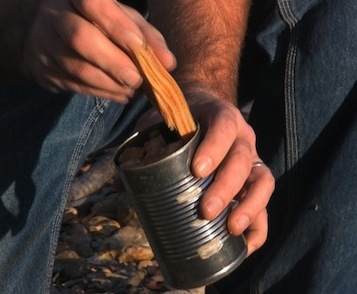
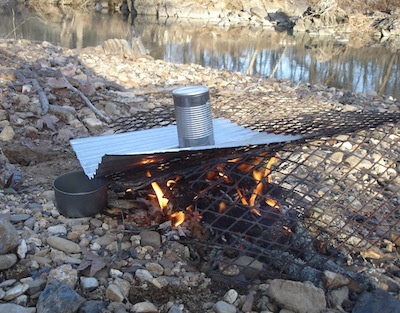

Soft pine wood, light & easy to work, is a good choice for wall logs or lumber when milled. I’ll be making big use of it in coming months for building my new workshop (rough-sawn lumber), as well as a log chicken house and small log brooder for hens. The knotless sections are also easy to split into thin boards for roofing called “shakes”.

An old, pine log chicken house not too many miles from here; a good deal similar to the one I plan on building
Oak varieties are somewhat more resistant to rot than pines, especially the “post oak”, identified by its cross-shaped leaf. The greater strength of the “hardwood” oaks make ’em harder to work or mill. I remember when building my first barn how the rough cut oak was fairly easy to nail when green, but then about a couple month’s curing later I had to dip the tip of each nail in grease or oil; and even then many bent nails were sacrificed.
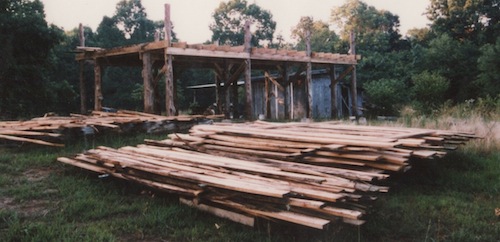

Hickory, another hardwood, is about as strong as oak but with less mass making it exceptional for tool handles or anything that requires less weight with a little “give”. (No wonder it makes a good baseball bat.) This makes it almost a shame to burn hickory except for the fact that it burns so efficiently and hot, putting off such a great smelling smoke for flavoring meats (and quite possibly one of my favorite smells of all time…hickory smoke).
Whether for fence posts or pole barn supports there are three good choices for wood that will stay in contact with the ground: black locust, bodark (or bois d’arc), and cedar.
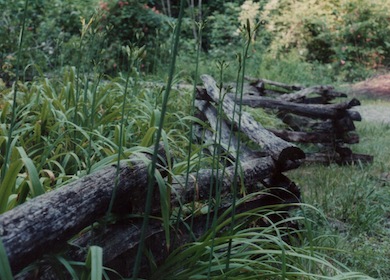
Black locust is very hard, easy to split, but often grows crooked. Crooked doesn’t matter with fences, though.
Bodark (or bois d’arc, a.k.a. osage-orange, hedge apple, bowwood) is perhaps the hardest of hardwoods in North America, with the added benefit of not rotting easily when reset into the ground as a post. It was sought by early European explorers & settlers of the New World who valued it for the making of archery bows as well as for “living” fences for livestock. The seeds from inside its fruit (osage “oranges”) were planted closely in long rows. As they grew the limbs were continuously intertwined with one another and heavily pruned to encourage more growth, which was woven again…and so on. It was said that a well “grown” fence could even keep hogs and chickens in (and foxes out). Even the smaller limbs around one inch in diameter have notable density and are next to impossible to break (even after they’ve died and dried up).
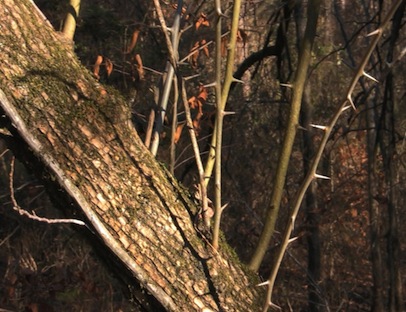
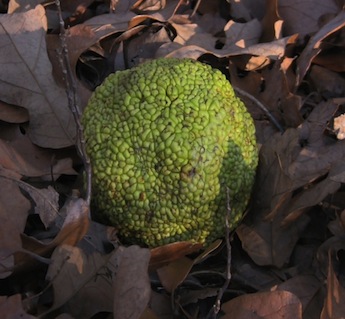
Some call it an osage-orange (even though it’s not orange), and some call it a hedge apple (even though it’s not an apple); I call it that big, brainy lookin’ thing that grows on a bodark tree.
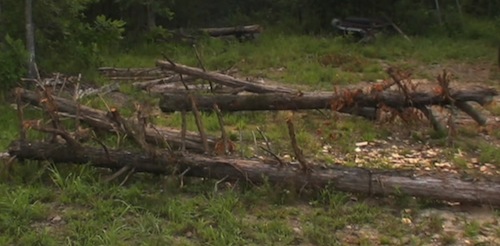
Leave the limbs on cedars and you have instant hangers for ropes, hats, or lanterns.
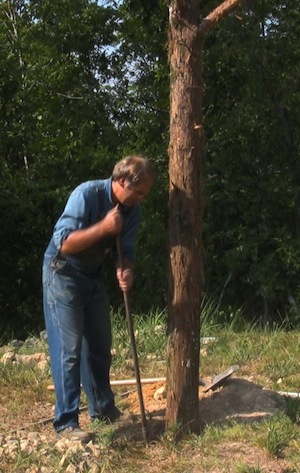
Eastern red cedar, unlike locust & bodark, is an evergreen. It, too, is good for fence posts, and its typically straight logs make good poles for pole barn construction. The purplish-red heartwood is more rot resistant than the sapwood, and has the added benefit of being a natural insect repellent. Even termites turn their noses up at it. Old timers keep a chunk of the red heartwood in their drawers (the clothes drawers, that is) to keep moths out.
Pictures, video, and article by Pa Mac, copyright 2013
Shared on:
The Barn Hop
The Backyard Farming Connection
Simple Living Wednesday
Down Home Blog Hop
Simple Lives Thursday
Farm Girl Blog Fest
Frugal Days, Sustainable Ways
